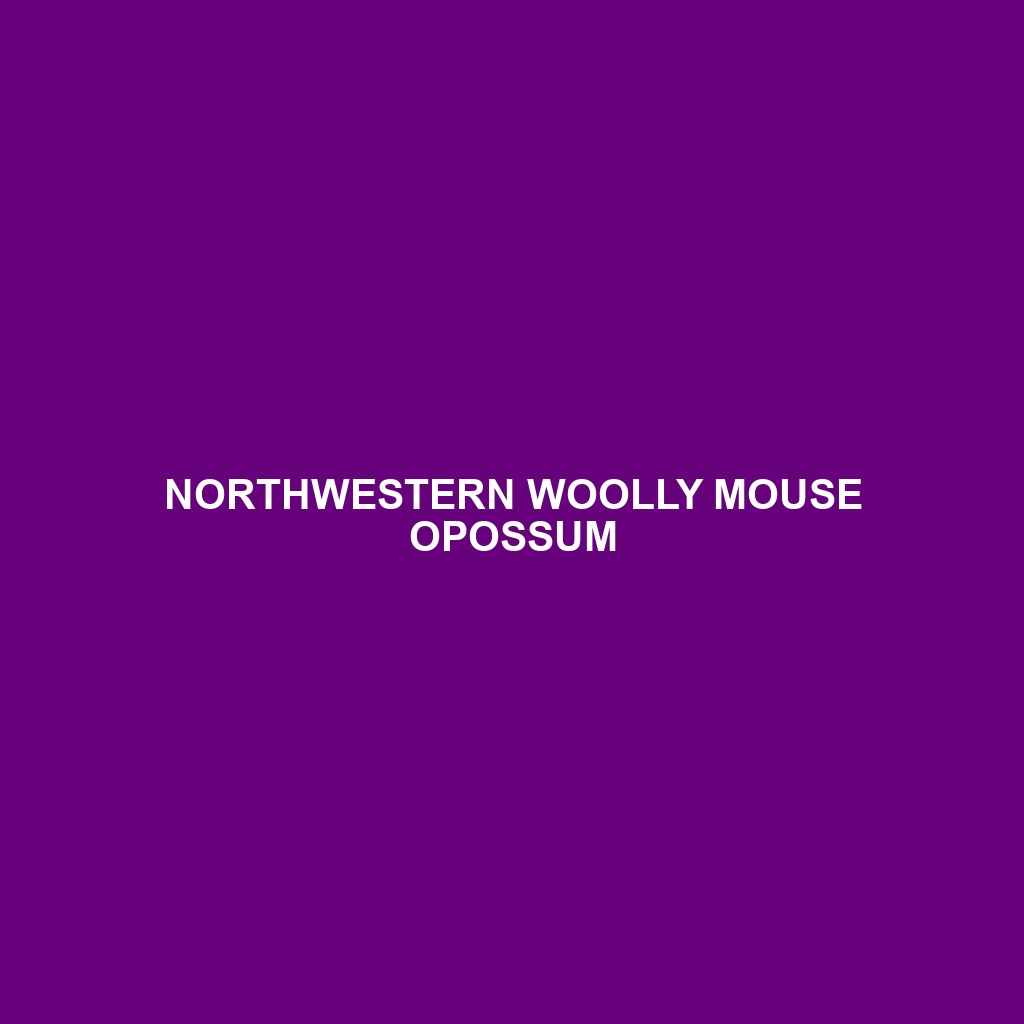Northwestern Woolly Mouse Opossum: A Detailed Description
The Northwestern Woolly Mouse Opossum (Micoureus alstoni) is a small, nocturnal marsupial native to the tropical forests of Central and South America. Known for its soft, woolly fur and agile movements, this opossum is a fascinating creature that plays a vital role in its ecosystem. Despite its elusive nature, the Northwestern Woolly Mouse Opossum has intrigued scientists and animal enthusiasts alike with its unique adaptations and behaviors.
Physical Characteristics
Size: This opossum is relatively small, with an average body length ranging from 10 to 15 centimeters (4 to 6 inches) and a tail that can add another 13 to 20 centimeters (5 to 8 inches). Their total weight typically falls between 25 to 50 grams (0.88 to 1.76 ounces).
Coloration: The fur of the Northwestern Woolly Mouse Opossum is characterized by its dense, soft, and woolly texture. The dorsal side is usually a grayish-brown color, while the ventral side is lighter, often a cream or white shade.
Special Features: One of the distinguishing features of this opossum is its prehensile tail, which is partially covered in fur and helps in climbing and balancing. Additionally, they possess large, rounded ears and a pointed snout, which enhance their nocturnal sensory abilities.
Behaviors
Social Interactions: Northwestern Woolly Mouse Opossums are generally solitary animals, with interactions typically occurring during mating seasons. They communicate through a series of vocalizations and scent markings.
Feeding Habits: These opossums are omnivorous, with a diet that includes fruits, insects, small vertebrates, and occasionally nectar. They play an important role in seed dispersal due to their fruit-eating habits.
Ecological Roles: Their feeding behavior aids in the control of insect populations and the dispersal of plant seeds, making them essential for maintaining the health of their forest ecosystems.
Habitats
Preferred Environment: The Northwestern Woolly Mouse Opossum thrives in tropical and subtropical forests, particularly in regions with dense vegetation and a high canopy. They are adept climbers and often reside in the understory and mid-canopy levels.
Geographical Range: Their range extends from southern Mexico through Central America and into parts of northern South America, including countries like Colombia and Venezuela.
Adaptations
Nocturnal Lifestyle: Adaptations such as large eyes and acute hearing aid in their nocturnal activities, allowing them to navigate and forage in the dark.
Prehensile Tail: This adaptation is crucial for their arboreal lifestyle, providing stability and maneuverability among the trees.
Reproductive Strategy: As marsupials, females possess a pouch where they carry and nurse their young until they are sufficiently developed to survive outside.
Conservation Status
Current Status: The Northwestern Woolly Mouse Opossum is currently listed as a species of Least Concern by the IUCN Red List, indicating that it does not face any immediate threat of extinction. However, habitat destruction due to deforestation remains a potential threat to their populations.
Conservation Efforts: Efforts to preserve their habitats through sustainable forestry practices and protected areas are essential to ensure their continued survival.
Fun Facts
Marsupial Pouch: Like other marsupials, the Northwestern Woolly Mouse Opossum has a pouch where its young continue to develop after birth.
Elusive Nature: Despite their wide range, these opossums are rarely seen due to their nocturnal and solitary habits, making sightings a special occurrence for wildlife enthusiasts.
Agile Climbers: Their prehensile tails and strong limbs make them exceptional climbers, able to navigate the forest canopy with ease.
The Northwestern Woolly Mouse Opossum is a remarkable creature with a blend of unique physical and behavioral traits that not only make it an interesting subject of study but also an important component of its natural habitat.
